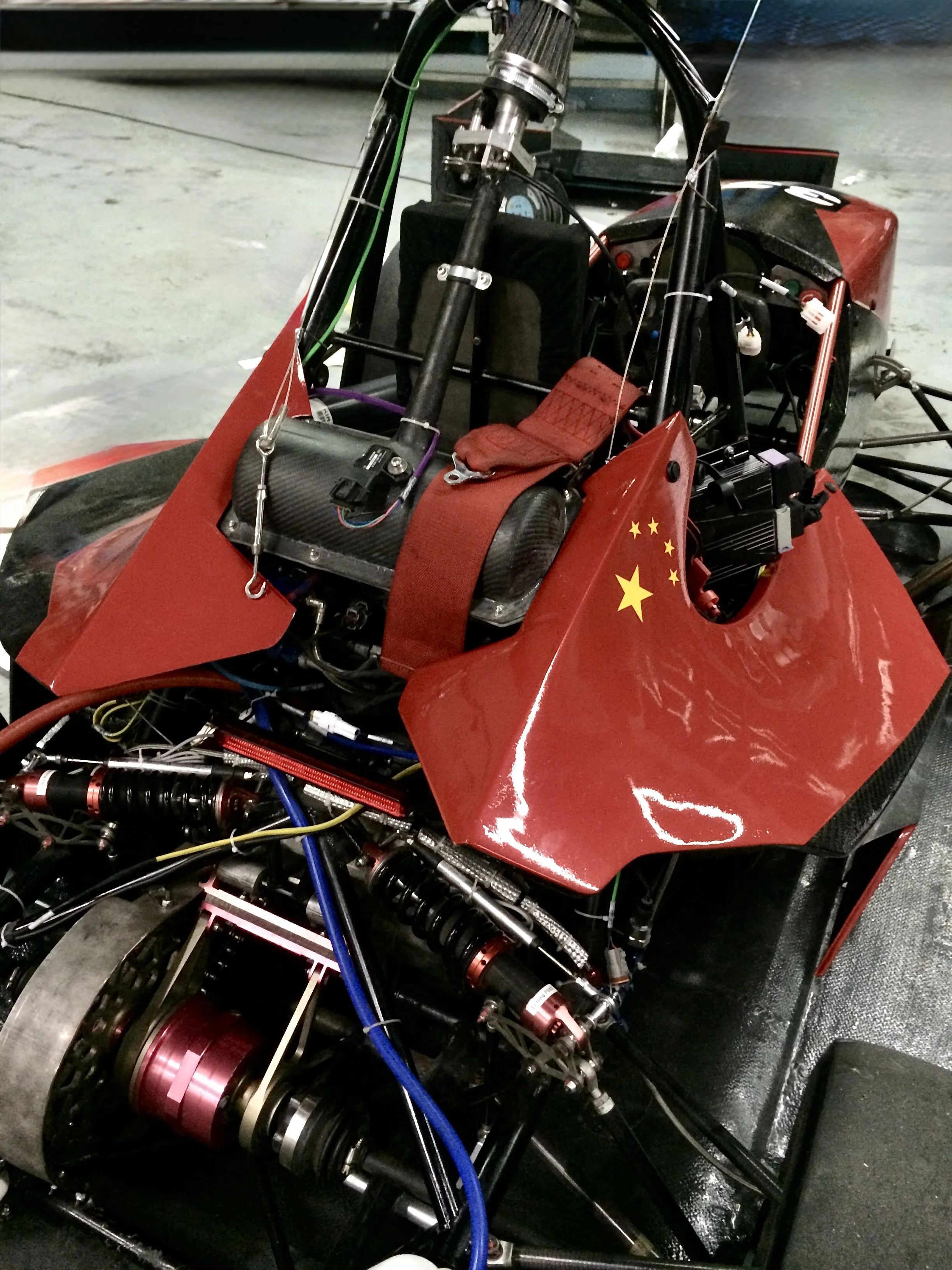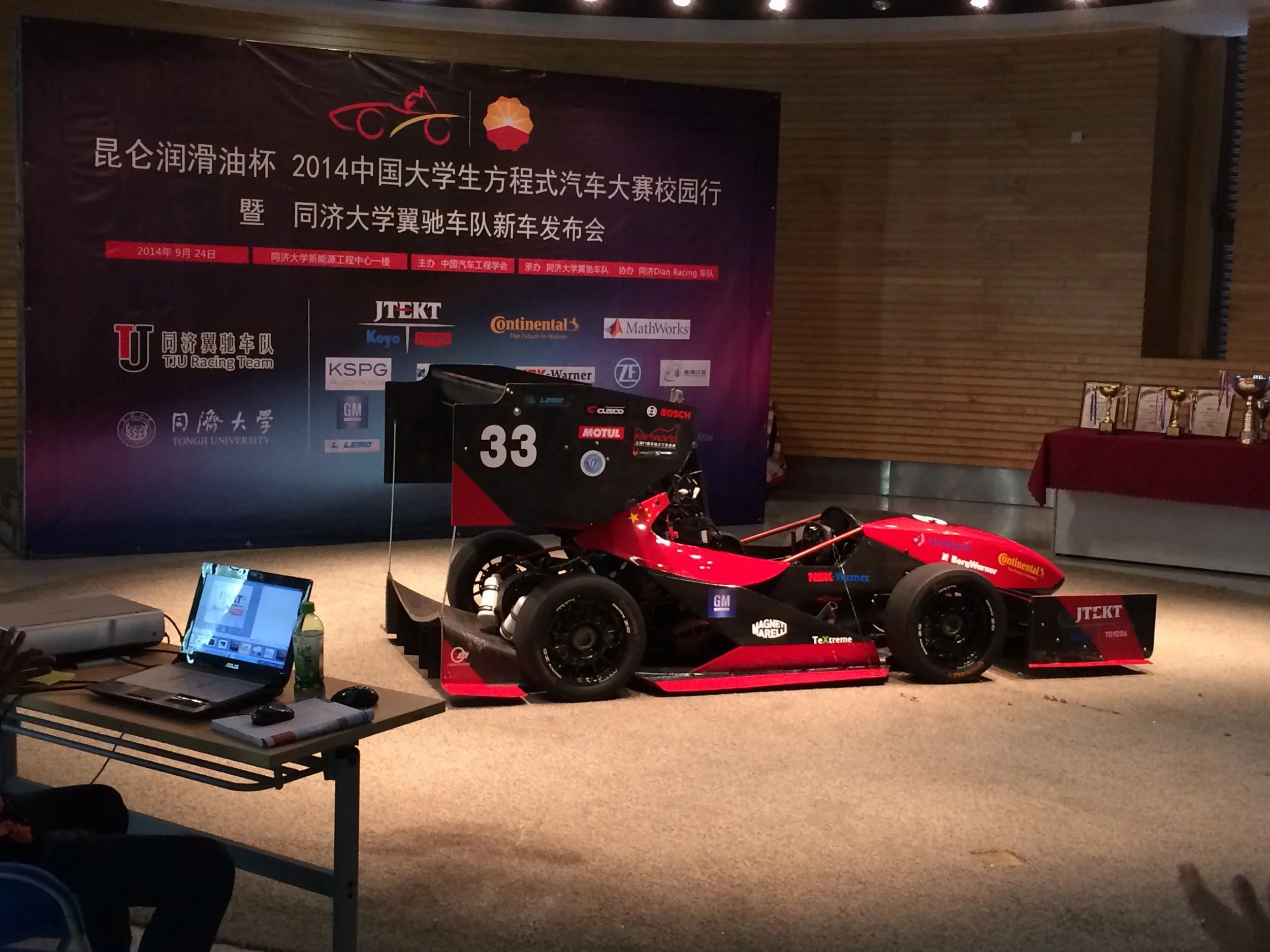











Armor For A Beast: TJU Racing Car Body Design
FSAE 2014
#RacingCar #FormulaStudent #CarbonFiber #Aerodynamics
Tools: Autodesk Alias, Ansys, CATIA, Photoshop, CNC, Carbon Fiber
Engineering Speed: The Challenge of Formula SAE
In Formula SAE, every gram counts. The difference between winning and losing isn’t just about engine power—it’s about precision-engineered aerodynamics, lightweight materials, and structural efficiency.
As part of the TJU Racing Team, I took on the challenge of designing the body shell and aerodynamic components for our 2014 FSAE race car. The goal? Create a lightweight, structurally optimized carbon fiber body that maximized downforce, minimized drag, and enhanced overall vehicle performance, while maintaining driver safety and ease of maintenance.
This car went on to compete in FSAE China and FSAE Japan, where it broke the team’s all-time ranking record, proving that intelligent design and engineering optimization could deliver real-world racing success.
From Concept to Reality: The Design & Development Process
Building a competitive race car body required a cross-disciplinary approach, combining aesthetic form, structural integrity, and aerodynamic efficiency.
- Concept Development & Surface Modeling
Using Autodesk Alias, I sculpted the initial body design, focusing on a balance between aggressive styling and functional aerodynamics. The design had to:
✅ Reduce frontal drag while maintaining high-speed stability.
✅ Optimize airflow around the vehicle, ensuring efficient cooling and downforce generation.
✅ Integrate seamlessly with the chassis and suspension geometry.
✅ Achieve a bold, aggressive aesthetic that reflected the team’s competitive spirit and engineering prowess.
- Aerodynamic Simulation & Structural Testing
With the body shape defined, we used Ansys CFD (Computational Fluid Dynamics) to analyze:
Airflow behavior across the body surface.
Drag coefficient (Cd) and lift-to-drag ratio optimization.
Cooling efficiency for the radiator and brake systems.
We ran multiple iterations to refine the side pods, underbody, and wing elements, ensuring the car maintained optimal grip at high speeds while keeping drag to a minimum.
- Engineering & Manufacturing: More Than Just Aerodynamics
Beyond aerodynamics, the body structure had to account for driver safety, heat management, and accessibility for maintenance.
Front Section – Driver Safety & Aerodynamics
The front nose cone and side panels were fully enclosed to protect the driver from debris impact and maintain aerodynamic efficiency.
The carbon fiber composite shell added rigidity and crash protection, ensuring compliance with FSAE safety regulations.
Rear Section – Engine Cooling & Accessibility
The rear of the body was intentionally left open for efficient heat dissipation from the engine and exhaust system.
This design allowed for quick engine inspections, reducing downtime for tuning and repairs between races.
Side Panels – Quick-Release System for Maintenance
Both sides featured quick-removable locks, allowing easy disassembly for:
✅ Water tank inspection and refilling.
✅ Brake system and suspension maintenance.
✅ Fast troubleshooting during pit stops.This modular design enabled efficient part replacement without compromising structural integrity.
The final body was fabricated using CNC-milled molds and carbon fiber layup, ensuring the structure was lightweight yet durable, optimized for both performance and practicality.
The Final Product: Racing-Ready Performance
The end result was a sleek, aggressive body shell that gave our Formula SAE race car both form and function:
🚀 Lightweight Strength – The carbon fiber body significantly reduced overall vehicle weight, improving acceleration and handling.
🌪️ Aerodynamic Efficiency – Optimized airflow improved high-speed stability and reduced energy loss due to drag.
🔥 Cooling & Performance – The rear-open design and side-panel ventilation ensured efficient heat dissipation for engine longevity and race performance.
🛠️ Modular Maintenance – The quick-release side panels enabled fast component access, allowing teams to perform rapid adjustments without dismantling the entire body shell.
💎 Bold Aesthetic Identity – The sharp, sculpted surfaces and carbon fiber finish gave the car a powerful, race-ready presence, embodying the engineering precision behind its performance.
This design played a crucial role in TJU Racing’s best-ever ranking in FSAE China and FSAE Japan, proving that a well-executed body design is just as critical as engine tuning or suspension engineering.
Final Thoughts: Design for Speed & Efficiency
Formula SAE is more than just a student competition—it’s an engineering proving ground where design, performance, and manufacturing come together under real-world constraints.
Designing the body shell and aerodynamic components reinforced the importance of balancing lightweight materials, aerodynamic efficiency, and engineering practicality. A race car isn’t just about speed—it’s about how well every element works together.
💡 Every curve, every panel, and every gram matters. And sometimes, the best way to armor a beast is with precision-engineered carbon fiber, optimized aerodynamics, and smart accessibility solutions.





